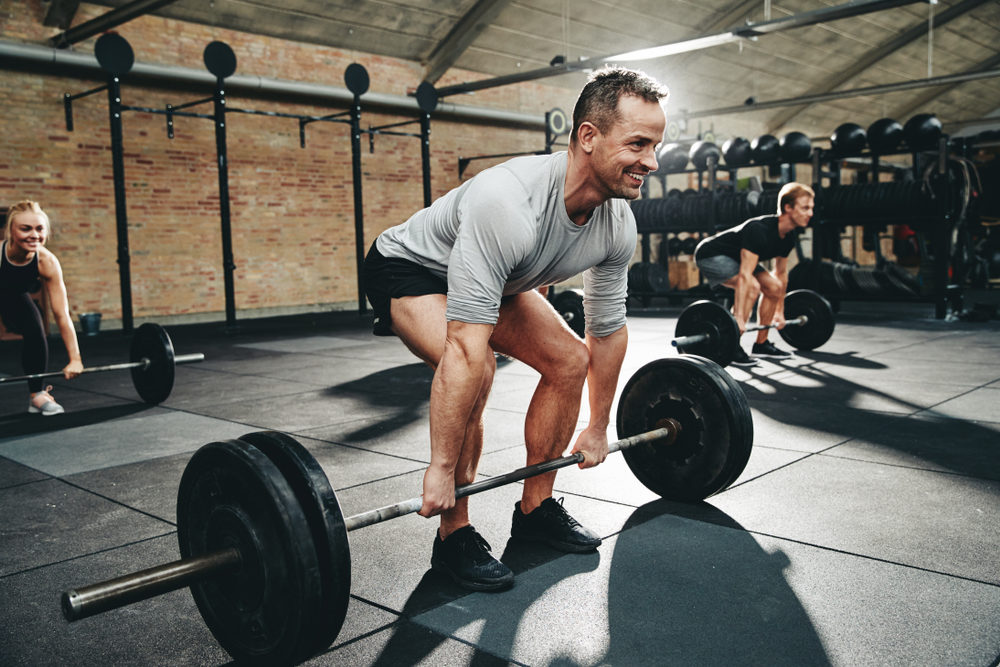Weightlifter’s shoulder can be painful and debilitating, but it generally responds well to conservative treatment.
If you lift weights, you know a healthy shoulder is necessary for you to perform your workout routine. The joint’s tremendous flexibility and strength allows you to hoist heavy weights above your head — yet that same wide range of motion increases the likelihood of an injury.
One of the most common shoulder injuries weightlifters experience is a distal clavicular osteolysis or AC joint osteolysis, also known as weightlifter’s shoulder. Although the condition is most often seen in weightlifters, workers who regularly lift heavy objects or tennis players who use repeated overhead motions are at risk as well. In rare cases, weightlifter’s shoulder can result from a blow to the joint.
Weightlifter’s shoulder is considered an overuse injury because the repetitive action of lifting weights leads to small fractures along the end of the collarbone. As these fractures grow in number, the bone within the AC joint — the joint that connects the collarbone to the shoulder blade — deteriorates, causing pain, tenderness, swelling, and weakness. The good news is, weightlifter’s shoulder can be corrected fully with physical therapy and other conservative treatments. Surgery is generally recommended only as a last option.
Treating Your Weightlifter’s Shoulder
Your orthopedist will diagnose your condition with a series of physical tests, including stretching your arm across your chest. If you feel pain, you may have weightlifter’s shoulder. An X-ray may also be done to assess bone density, since poor bone density indicates distal clavicular osteolysis. Your doctor might do further testing to rule out other conditions, such as an infection or rheumatoid arthritis.
If it’s determined you have weightlifter’s shoulder, stop lifting immediately to give the joint time to rest. Icing the joint and taking anti-inflammatory medications reduces discomfort and swelling. Your doctor may also suggest corticosteroid injections.
As the pain subsides, you’ll begin a physical therapy program to strengthen the muscles around the shoulder and improve your range of motion. Complete recovery typically takes about six to eight weeks.
How to Prevent Weightlifter’s Shoulder
You can also take measures to prevent weightlifter’s shoulder, such as using lighter weights, and limiting the number of shoulder extension exercises — bench presses, dips, or push-ups — you perform. If you do bench presses, grasp the barbell with your hands closer together, or place a towel on your chest to make sure the bench press stops four to six centimeters above the chest.
Blackburn exercises designed to strengthen the shoulder may help you avoid weightlifter’s shoulder as well. These exercises are performed as you lie face-down on a table and lift your arms and shoulders in different directions.
Check with your doctor or physical therapist regarding when you can resume weightlifting, and work with a trainer to ensure you follow proper form while lifting. If you experience severe pain, immediately halt the workout and rest your body.
Visit a Shoulder Specialist
The orthopedic specialists at New York Bone & Joint always examine all conservative treatment options before considering surgery. Only if these methods are ineffective will we recommend a minimally invasive arthroscopic procedure to reshape the AC joint and eliminate pain.
If you’re suffering from shoulder pain, our orthopedic experts will diagnose the condition and get you back to the gym with a customized therapy plan. Contact our office today to set up an appointment.




